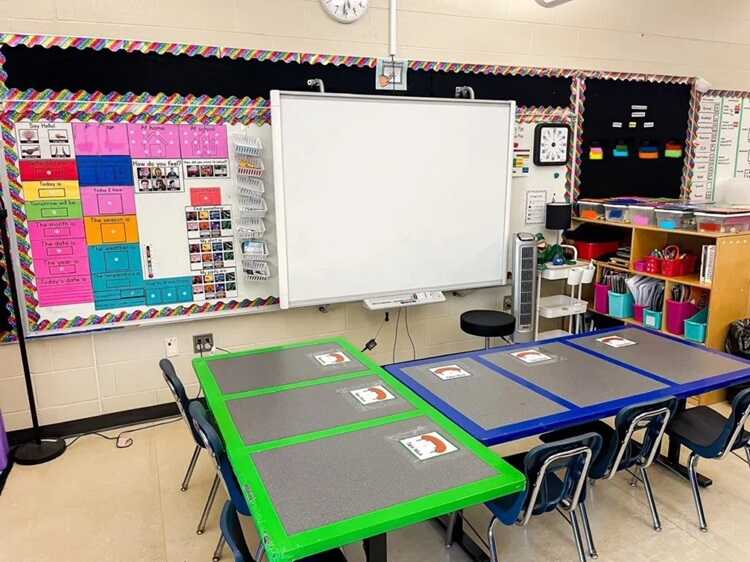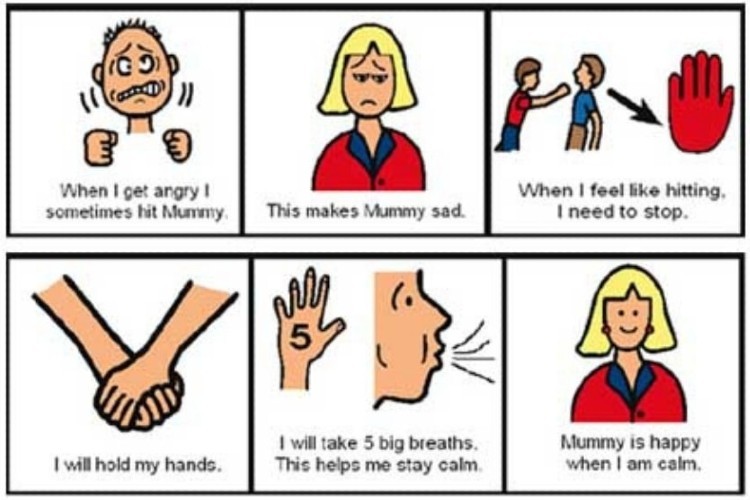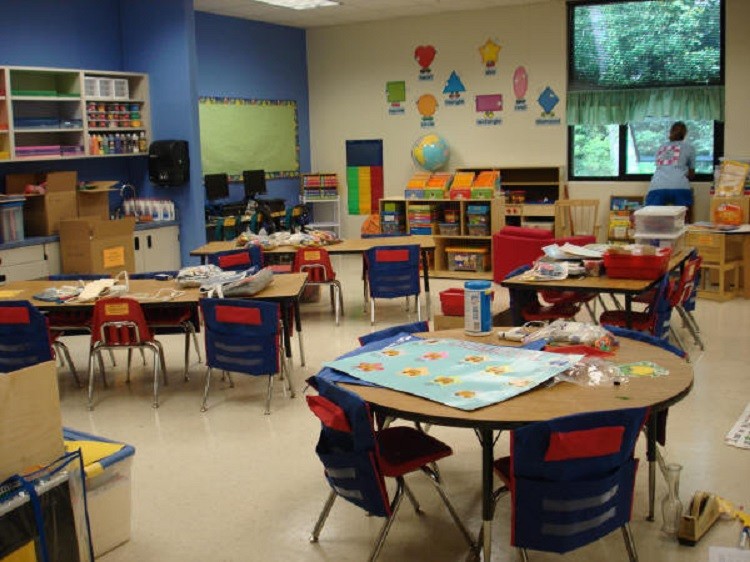Grocery shopping with your child with autism
Grocery shopping with your child with autism can be a stressful and overwhelming experience for many parents. If this sounds familiar, you’re not alone. Even a simple trip to the store can quickly become a challenge filled with sensory triggers and unexpected hurdles.
The grocery store environment can be overstimulating for a child with autism. Bright overhead lights, background music, crowded aisles, misting produce sprayers, and flashing coupon dispensers can all contribute to sensory overload. It’s no wonder that a quick errand can feel like a major task.
Grocery shopping with your child with autism doesn’t have to be something you dread. With the right approach and a bit of preparation, it can become a manageable—and even rewarding—experience for both you and your child.
Topics Covered:
- Preparation before your grocery shopping
- Techniques to use while grocery shopping
- Assess the grocery shopping experience
- Key Takeaways
By shifting your perspective and viewing each shopping trip as a chance to teach and connect, you can turn this routine outing into a valuable learning opportunity. This post offers simple, effective tips designed to make grocery shopping with your child with autism a more positive and manageable experience for both of you. With a little planning and patience, these outings can become less stressful and more empowering for your child.

Preparation before your grocery shopping with your child with autism
Before the shopping experience begins, it may be beneficial to state what is expected from your child. Provide clear rules and expectations for the shopping trip.
Suggestions for teaching three crucial parts of a grocery store visit:
- Safe walking to and from the car;
- Quiet in the car;
- Appropriate conduct in the store.
If this is your child’s first time to the grocery store and they are prone to meltdowns, then start small. Allow your child with autism to bring a small toy for comfort. Set a time of how long it will take.
Make a list of items in the order that you walk through the store. This can be drawn out, printed, or cut from advertisements—whatever format works best for your child to keep track of during the shopping trip.
Keep in mind that backtracking through the store can be difficult when shopping with a child who is autistic. Planning your route ahead of time helps minimize stress and keep the trip as smooth as possible.
Include items your child prefers or is interested in. This can help engage them in the process and make the experience feel more interactive.
As you find each item, ask your child to cross it off the list or place the picture in an envelope. This gives them a visual cue that they’re making progress and are one step closer to finishing the trip.
Another helpful option is to give your child a shortened list that doesn’t include every item you need. A simple strategy is to save the final item on your list to match the last item on their list. That way, they can clearly connect checking off the final item with the end of the shopping experience.
More and more grocery stores are trying out what is called ‘Quiet Hour’ which is a more autism-friendly atmosphere for individuals who need fewer distractions and sensory overload. Check out in your area if there are any participating.

Techniques to use while grocery shopping with your child with autism
Get your child involved in the shopping experience by allowing them to push the cart, select and put the items in the cart, place contents on the conveyor belt, and stay near the cashier until the groceries are bagged. Make the shopping experience fun.
Furthermore, use the experience to teach language skills. Grab a green and a red apple and ask your child to identify which one is red. Grab a big and a small can of tomatoes and ask your child to identify which one is bigger. Ask your child to label items that you grab from the shelves, especially preferable items. Based on how advanced your child’s speech is, tailor what you ask of them to their level.
Don’t forget—it’s important to provide continuous positive feedback when your child is participating in the shopping experience. Encouragement helps reinforce the behaviors you want to see.
Try not to draw too much attention to behavior that may not be appropriate for the grocery store setting. Instead, focus on and praise the positive actions your child is displaying.
One way to do this is by offering a reward at the end of the shopping trip. When your child with autism begins to master the basic skills of shopping, reinforce that progress with something they enjoy.
For example, if your child loves Hershey candy bars, place that as the last item on the list. Throughout the trip, remind them that demonstrating good behavior will earn them their favorite treat.
Keeping their “eyes on the prize” can help your child stay motivated, attentive, and even excited to finish the trip on a positive note.
Have a backup enjoyable activity that your child can engage in while you are completing the remaining part of the shopping trip that is not on their list. A small coloring book, games on your phone, a squishy toy, or some music through headphones may work to keep them engaged.
Lastly, if your child has difficulties walking through an entire shopping experience, allow your child to catch a ride on the shopping cart only if they have walked and helped for a certain amount of time, or when all of their grocery lists are completed. If you base it on time, be sure to have a visual chart (e.g., have 5 boxes, each representing 2 minutes) or timer for them to know how much time they have left of walking.
Assess the grocery shopping with your child with autism experience
Remember to take your child often to the grocery store. Taking them to the grocery store once or twice each week is now part of their routine and something they expect and even look forward to.
Don’t be discouraged based on one trip to the grocery store with your child on the spectrum. Not all trips to the grocery store end in triumph and when things don’t go so well, tell yourself that success emerges from routine and persistence. Trying again (and again and again) is an important part of the learning process for your child with autism. It is important to learn life skills that they will need to know how to do later in life.
We all have good days and bad days and that holds true to our children. You’ll be pleasantly surprised when you see your child starts to take simple steps toward a positive grocery shopping experience as long as you don’t put limits on your time and expectations of your child with autism.
Key Takeaways:
- Set Clear Expectations: Before the trip, explain to your child what behaviors are expected, such as safe walking, staying quiet in the car, and appropriate conduct in the store.
- Start with Short Trips: For first-time experiences or if your child is prone to meltdowns, begin with brief shopping trips to help them acclimate.
- Create a Visual Shopping List: Use pictures or drawings of items in the order you’ll find them in the store. This helps your child track progress and understand the sequence of the trip.
- Engage Your Child in the Process: Involve your child by letting them push the cart, select items, and place them on the conveyor belt. This participation can make the experience more engaging and educational.
- Utilize ‘Quiet Hours’: Some grocery stores offer sensory-friendly shopping times with reduced noise and lighting. Check if local stores provide such accommodations to create a more comfortable environment for your child.
At LeafWing Center, we understand that everyday experiences like grocery shopping can present unique challenges for families of children with autism. That’s why we’re committed to being a trusted resource and support system for both parents and children. Through personalized therapy, practical strategies, and compassionate guidance, we help families navigate these moments with confidence. Our goal is to empower every child to experience life to the fullest and reach their highest potential. With the right tools and support, even the smallest outings can become meaningful steps toward growth and independence.
Related Glossary Terms
Other Related Articles
- Strategies to use for the park with your child with autism
- Alternative Behavior Examples To Decrease Challenging Behaviors
- What to do before and after telling your child with autism ‘No’
Frequently asked questions about ABA therapy
What is ABA Therapy used for?
ABA-based therapy can be used in a multitude of areas. Currently, these interventions are used primarily with individuals living with ASD; however, their applications can be used with individuals living with pervasive developmental disorders as well as other disorders. For ASD, it can be used in effectively teaching specific skills that may not be in a child’s repertoire of skills to help him/her function better in their environment whether that be at home, school, or out in the community. In conjunction with skill acquisition programs, ABA-based interventions can also be used in addressing behavioral excesses (e.g., tantrum behaviors, aggressive behaviors, self-injurious behaviors). Lastly, it can also be utilized in parent/caregiver training.
In skill acquisition programs, a child’s repertoire of skills is assessed in the beginning phase of the services in key adaptive areas such as communication/language, self-help, social skills, and motor skills as well. Once skills to be taught are identified, a goal for each skill is developed and then addressed/taught by using ABA-based techniques to teach those important skills. Ultimately, an ABA-based therapy will facilitate a degree of maintenance (i.e., the child can still perform the learned behaviors in the absence of training/intervention over time) and generalization (i.e., the learned behaviors are observed to occur in situations different from the instructional setting). These two concepts are very important in any ABA-based intervention.
In behavior management, the challenging behaviors are assessed for their function in the beginning phase of the services. In this phase, the “why does this behavior happen in the first place?” is determined. Once known, an ABA-based therapy will be developed to not just decrease the occurrence of the behavior being addressed, but also teach the child a functionally-equivalent behavior that is socially-appropriate. For example, if a child resorts to tantrum behaviors when she is told she cannot have a specific item, she may be taught to accept an alternative or find an alternative for herself. Of course, we can only do this up to a certain point—the offering of alternatives. There comes a point when a ‘no’ means ‘no’ so the tantrum behavior will be left to run its course (i.e., to continue until it ceases). This is never easy and will take some time for parents/caregivers to get used to, but research has shown that over time and consistent application of an ABA-based behavior management program, the challenging behavior will get better.
In parent training, individuals that provide care for a child may receive customized “curriculum” that best fit their situation. A typical area covered in parent training is teaching responsible adults pertinent ABA-based concepts to help adults understand the rationale behind interventions that are being used in their child’s ABA-based services. Another area covered in parent training is teaching adults specific skill acquisition programs and/or behavior management programs that they will implement during family time. Other areas covered in parent training may be data collection, how to facilitate maintenance, how to facilitate generalization of learned skills to name a few.
There is no “one format” that will fit all children and their families’ needs. The ABA professionals you’re currently working with, with your participation, will develop an ABA-based treatment package that will best fit your child’s and your family’s needs. For more information regarding this topic, we encourage you to speak with your BCBA or reach out to us at info@leafwingcenter.org.
Who Can Benefit From ABA Therapy?
There is a common misconception that the principles of ABA are specific to Autism. This is not the case. The principles and methods of ABA are scientifically backed and can be applied to any individual. With that said, the U.S. Surgeon General and the American Psychological Association consider ABA to be an evidence based practice. Forty years of extensive literature have documented ABA therapy as an effective and successful practice to reduce problem behavior and increase skills for individuals with intellectual disabilities and Autism Spectrum Disorders (ASD). Children, teenagers, and adults with ASD can benefit from ABA therapy. Especially when started early, ABA therapy can benefit individuals by targeting challenging behaviors, attention skills, play skills, communication, motor, social, and other skills. Individuals with other developmental challenges such as ADHD or intellectual disability can benefit from ABA therapy as well. While early intervention has been demonstrated to lead to more significant treatment outcomes, there is no specific age at which ABA therapy ceases to be helpful.
Additionally, parents and caregivers of individuals living with ASD can also benefit from the principles of ABA. Depending on the needs of your loved one, the use of specified ABA techniques in addition to 1:1 services, may help produce more desirable treatment outcomes. The term “caregiver training” is common in ABA services and refers to the individualized instruction that a BCBA or ABA Supervisor provides to parents and caregivers. This typically involves a combination of individualized ABA techniques and methods parents and caregivers can use outside of 1:1 sessions to facilitate ongoing progress in specified areas.
ABA therapy can help people living with ASD, intellectual disability, and other developmental challenges achieve their goals and live higher quality lives.
What does ABA Therapy look like?
Agencies that provide ABA-based services in the home-setting are more likely to implement ABA services similarly than doing the same exact protocols or procedures. Regardless, an ABA agency under the guidance of a Board-Certified Behavior Analyst follows the same research-based theories to guide treatment that all other acceptable ABA agencies use.
ABA-based services start with a functional behavior assessment (FBA). In a nutshell, a FBA assesses why the behaviors may be happening in the first place. From there, the FBA will also determine the best way to address the difficulties using tactics that have been proven effective over time with a focus on behavioral replacement versus simple elimination of a problem behavior. The FBA will also have recommendations for other relevant skills/behaviors to be taught and parent skills that can be taught in a parent training format to name a few. From there, the intensity of the ABA-based services is determined, again, based on the clinical needs of your child. The completed FBA is then submitted to the funding source for approval.
One-on-one sessions between a behavior technician and your child will start once services are approved. The duration per session and the frequency of these sessions per week/month will all depend on how many hours your child’s ABA services have been approved for—usually, this will be the number recommended in the FBA. The sessions are used to teach identified skills/behaviors via effective teaching procedures. Another aspect of ABA-based services in the home-setting is parent training. Parent training can take many forms depending on what goals have been established during the FBA process. The number of hours dedicated for parent training is also variable and solely depends on the clinical need for it. If a 1:1 session is between a behavior technician and your child, a parent training session or appointment is between you and the case supervisor and with and without your child present, depending on the parent goal(s) identified. Parent training service’s goal is for you to be able to have ample skills/knowledge in order for you to become more effective in addressing behavioral difficulties as they occur outside of scheduled ABA sessions. Depending on the goals established, you may be required to participate in your child’s 1:1 sessions. These participations are a good way for you to practice what you have learned from the case supervisor while at the same time, having the behavior technician available to you to give you feedback as you practice on those new skills.
As mentioned in the beginning, no two ABA agencies will do the same exact thing when it comes to providing ABA services; however, good agencies will always base their practice on the same empirically-proven procedures.
How do I start ABA Therapy?
In most cases, the first item required to start ABA therapy is the individual’s autism spectrum disorder (ASD) diagnosis report. This is typically conducted by a doctor such as a psychiatrist, psychologist, or a developmental pediatrician. Most ABA therapy agencies and insurance companies will ask for a copy of this diagnosis report during the intake process as it is required to request an ABA assessment authorization from the individual’s medical insurance provider.
The second item required to start ABA therapy is a funding source. In the United States, and in cases where Medi-Cal or Medicare insurances are involved, there is a legal requirement for ABA services to be covered when there is a medical necessity (ASD diagnosis). Medi-Cal and Medicare cover all medically necessary behavioral health treatment services for beneficiaries. This typically includes children diagnosed with ASD. Since Applied Behavior Analysis is an evidence based and effective treatment for individuals with ASD, it is considered a covered treatment when medically necessary. In many cases, private insurance will also cover ABA services when medically necessary, however in these cases, it is best to speak directly with your medical insurance provider to determine the specifics of the coverage and to ensure that ABA is in fact, a covered benefit. Additionally, some families opt to pay for ABA services out-of-pocket.
The next step to starting ABA therapy is to contact an ABA provider whom you are interested in working with. Depending on your geographic location, ABA agencies exist in many cities across the United States. Your insurance carrier, local support groups, and even a thorough online search can help you find reputable and properly credentialed ABA agencies near you. Our organization, LeafWing Center, is based in southern California and is recognized for aiding people with ASD achieve their goals with the research based on applied behavior analysis.
Once you have identified the ABA provider with whom you wish to work, they should help you facilitate the next steps. These will include facilitating paperwork and authorizations with your funding source. Once the assessment process begins, a BCBA (Board Certified Behavior Analyst) or qualified Program Supervisor should get in contact with you to arrange times in which interviews with parents/caregivers and observations of your loved one can be conducted. This will help in the process of gathering important clinical information so that with your collaboration, the most effective treatment plans and goals can be established for your loved one. This process is referred to as the Functional Behavior Assessment (FBA) and is elaborated on in different blog posts on our website. With regard as to what can be expected once ABA therapy begins, please read our blog post titled: When You Start an ABA program, What Should You Reasonably Expect from Your Service Provider?


































